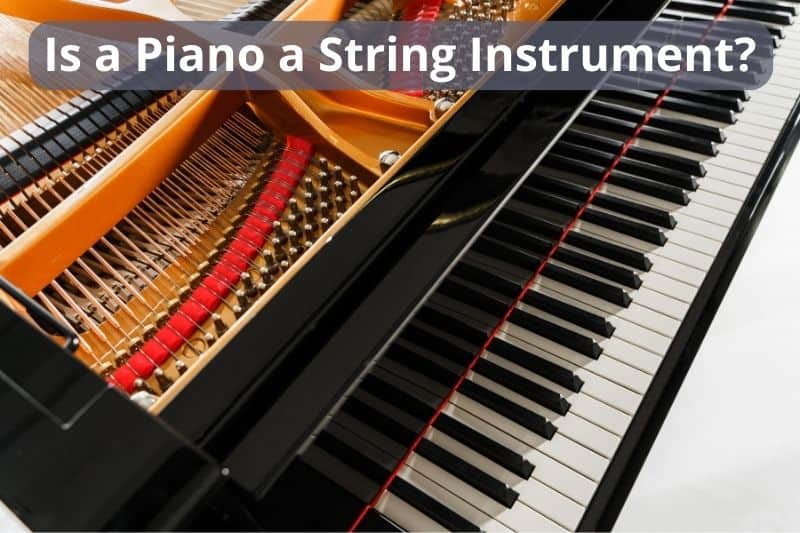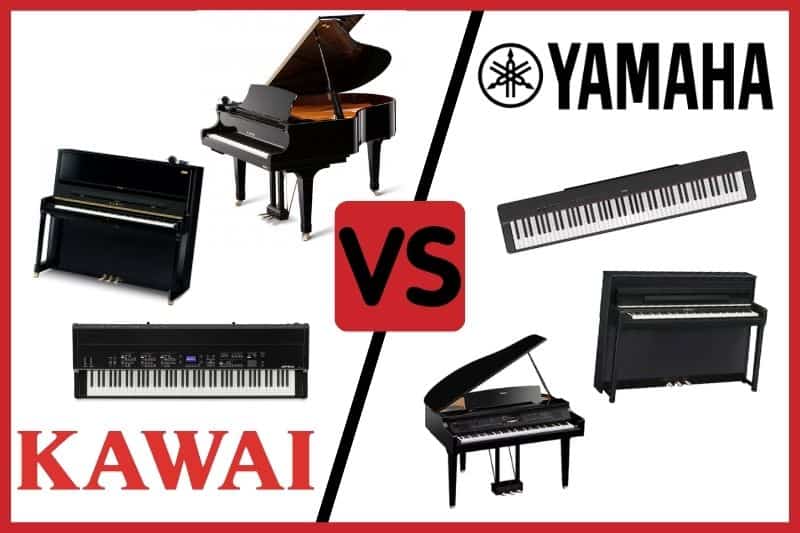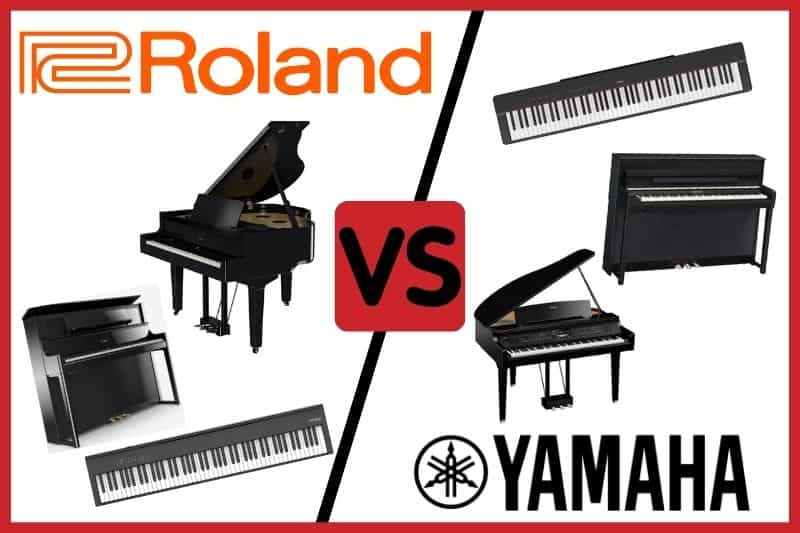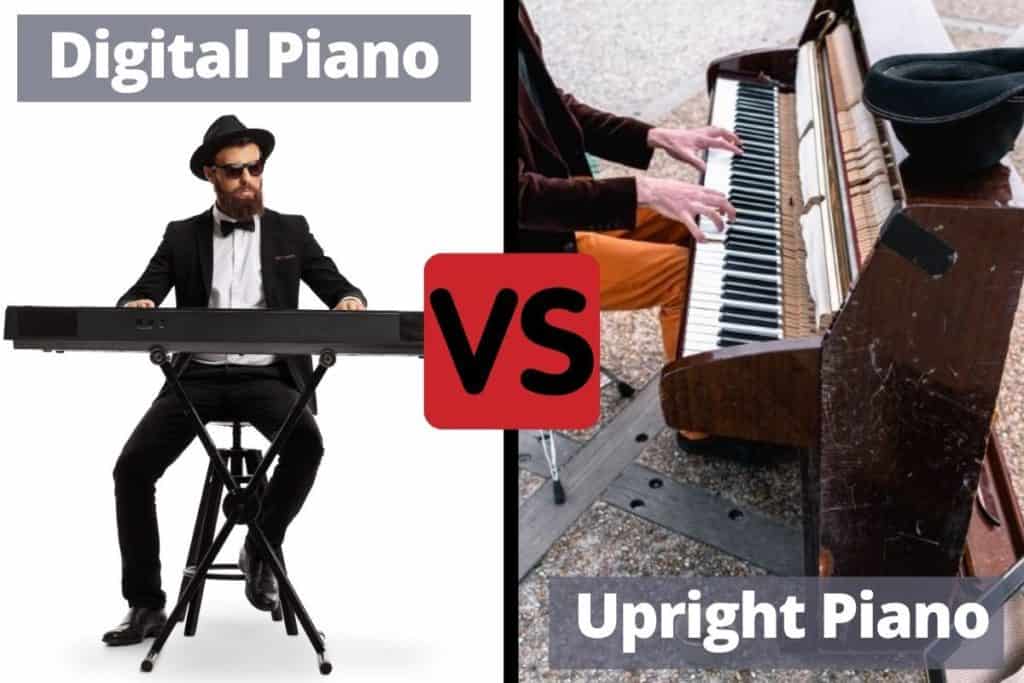
The traditional acoustic piano has been around for countless decades, but it continues to see modern advancements that make it even better each year. If you’re new to playing the piano or want to get a new one, you’ll be faced with the dilemma of choosing between digital and upright pianos.
Digital pianos are better if you want a portable instrument with volume control, and they can be cheaper. However, upright acoustic pianos have an appealing old school piano bass that a digital piano struggles to mimic. Both of them are great for pianists from novice to expert.
Throughout this article, you’ll learn the following info about this popular comparison:
- Benefits of choosing digital pianos
- Why you might want to get an upright piano
- Which one is right for you?
- The downsides of both piano styles
Pros and Cons of Digital Piano
Using digital pianos has become equally as popular (if not more in some circles) as traditional pianos. Somehow, the perfection of upright pianos was lost along the way, but there’s no denying the numerous benefits of using digital pianos.
As with all styles of this timeless instrument, there are a few drawbacks as well. In this section, we’ll analyze the advantages and disadvantages of playing the digital piano.
Pros of Digital Pianos
- Digital pianos are incredibly lightweight and easy to move around. If you’re always playing for friends, family, or an audience, then there’s nothing better than a high-quality digital piano. They usually come with legs and a bench for you to sit on while you play it, as well.
- According to Liberty Park Music, high-end digital pianos sound just as good as upright pianos. In fact, if you compare it to a budget-friendly upright piano, most digital pianos will sound significantly better. This is thanks to the top-notch speaker system and quick timing from the keys.
- Digital pianos are usually much cheaper than upright pianos. Since they’re found all over the place these days, you won’t have to spend nearly as much money on a digital piano. However, upright pianos can cost quite a bit, even for a low-quality model. The shipping costs are much higher as well.
Cons of Digital Pianos
- Low-end digital pianos sound tacky and come with weak speaker systems. You won’t get a pure piano sound, but rather one that mimics the audio coming out of a computer. If your digital piano doesn’t have internal speakers, the situation can get even worse. Unfortunately, there’s no way to upgrade most digital pianos.
- Latency is a huge issue in the industry of digital pianos. Since it runs with a computerized system, the time between hitting the key and the sound registering through the speakers can be a bit off. Even if it’s only 0.1 seconds behind, it can mess up recordings, singing, and live performances.
Pros and Cons of Upright Piano
On the other hand, upright pianos have a bag of good and bad traits of their own. They’re beautiful to look at, and they definitely look much more like a classical piano than their digital counterparts. If you’re interested in buying an upright piano, then learning the pros and cons is definitely worth your time.
Here are the advantages and disadvantages of choosing upright pianos:
Pros of Upright Pianos
- Music Practice & Theory on the Stack Exchange points out that upright pianos sound the same as grand pianos. Rather than having to worry about malfunctioning speaker systems, you can sit back and enjoy the bass-filled, low hum of this beautiful instrument. Again, the price and quality impact results.
- Upright pianos look and feel much more like traditional pianos when you’re playing them. Aside from the aforementioned sound quality, the weight of the keys and appearance of the large piano is very similar to grand pianos. The only difference is that it’s taller rather than longer.
- Upright pianos are more portable when compared to grand ones. The name comes from the fact that all of the internal components are stored upright rather than longways. You’ll be able to move it around with relative ease, at least when compared to a large acoustic piano.
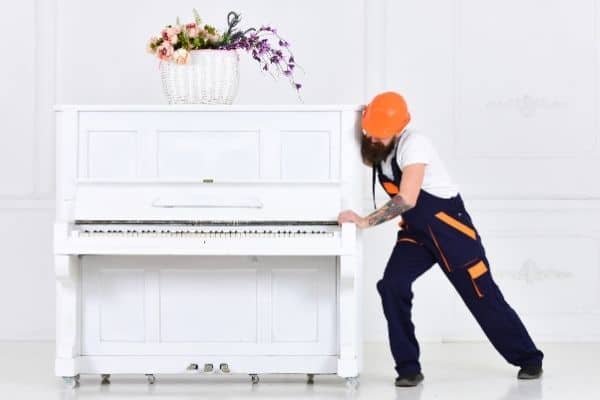
Cons of Upright Pianos
- Although they’re lighter in weight compared to grand pianos, they’re not nearly as light as digital pianos. For transportation purposes, upright pianos don’t even come close. They often weigh two to three times (if not more) than the same quality-level in a digital piano, making it a tough challenge.
- Repairing an upright piano is difficult because the parts aren’t always readily available. Even if they are, you’ll either have to fork out more money for labor costs and installation or do it yourself. These pianos are much trickier than the simplistic internal components of digital pianos, too.
- Acoustic pianos, whether upright or grand, will require regular maintenance. This could be a process like tuning, which could be annually, or things like hammer repair and refelting or string replacement, which doesn’t need doing that often.
Both piano types have their list of reasons why you may or may not want to choose them. They’re excellent choices, but there’s no doubt that you might prefer the mobility of a digital piano or the lovely sound quality of an upright piano.
If you want more assistance in making your decision, proceed to the next section.
Which One Should You Choose?
Digital pianos might’ve won the popular vote for people buying pianos online, but that doesn’t mean that they’re necessarily a better choice. In fact, some people still prefer to make the drive to buy an upright piano because they’re so much better in certain areas.
For those of you who are still stuck on the fence, review the following questions.
- Are you always on the move with your instruments? Maybe you’re in a band or regularly play at venues. If you do, then you’ll definitely want to choose a high-quality digital piano. If you’re willing to spend a little bit more, you’ll receive the same audio quality while tremendously reducing weight. Some of them fold up, reducing the space taken up as well.
- Are you a piano traditionalist? If so, then you’ll despise the new-age feeling of a digital piano. Nothing quite matches the feeling of playing the keys of a real piano. Upright pianos are as real as any other, so they’ll be a no-brainer choice for most people who prefer the classics.
- Are you on a budget? The amount that you’re willing to spend will directly impact your choice. You can get a super cheap digital piano or even a second hand one if you’re just trying to learn the ropes. Also, it’s worth checking with retailers to see if they have any sales coming up. Combine this with an online piano course, and you’ll catch up to speed before investing fully in your next instrument.
- Have you ever played the piano before? If you’re new to learning the piano, then you should probably pick a digital piano. They’re less expensive, and you can switch the sounds with different tones, voices, and other features. Upright pianos are limited to a single sound, though it’s quite an amazing one.
- How much space do you have, and do you need to consider others? Digital pianos will come with volume control as well as a port to plug in headphones. This can be a great asset if you have others living close by who do not want to be disturbed. Also, portable keyboards are just that and can be stored out of the way if more space is needed for other activities.
- Are you looking to learn the piano via an online learning app? Although you can use piano learning apps with both acoustic and digital keyboards, digital pianos will allow you to either connect with the app via Bluetooth or USB/MIDI ports to enhance the learning experience.
Conclusion
In the never-ending conflict between choosing a digital piano or an upright one, digital pianos usually end up taking the cake. They’re portable, and the sound quality improvements have made them sound just as good as an upright piano in the high-end models.
That being said, you’ll never reach the same traditional feeling and impact of an upright piano. The only way to truly decide for yourself is to try your hand at both of them. Visit a local music shop or listen to online tutorials and reviews to hear the differences.
In the end, the most important thing is to pick one and start playing. You’ll figure out which one you prefer after hearing the sounds and learning more about each instrument.

